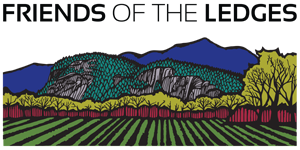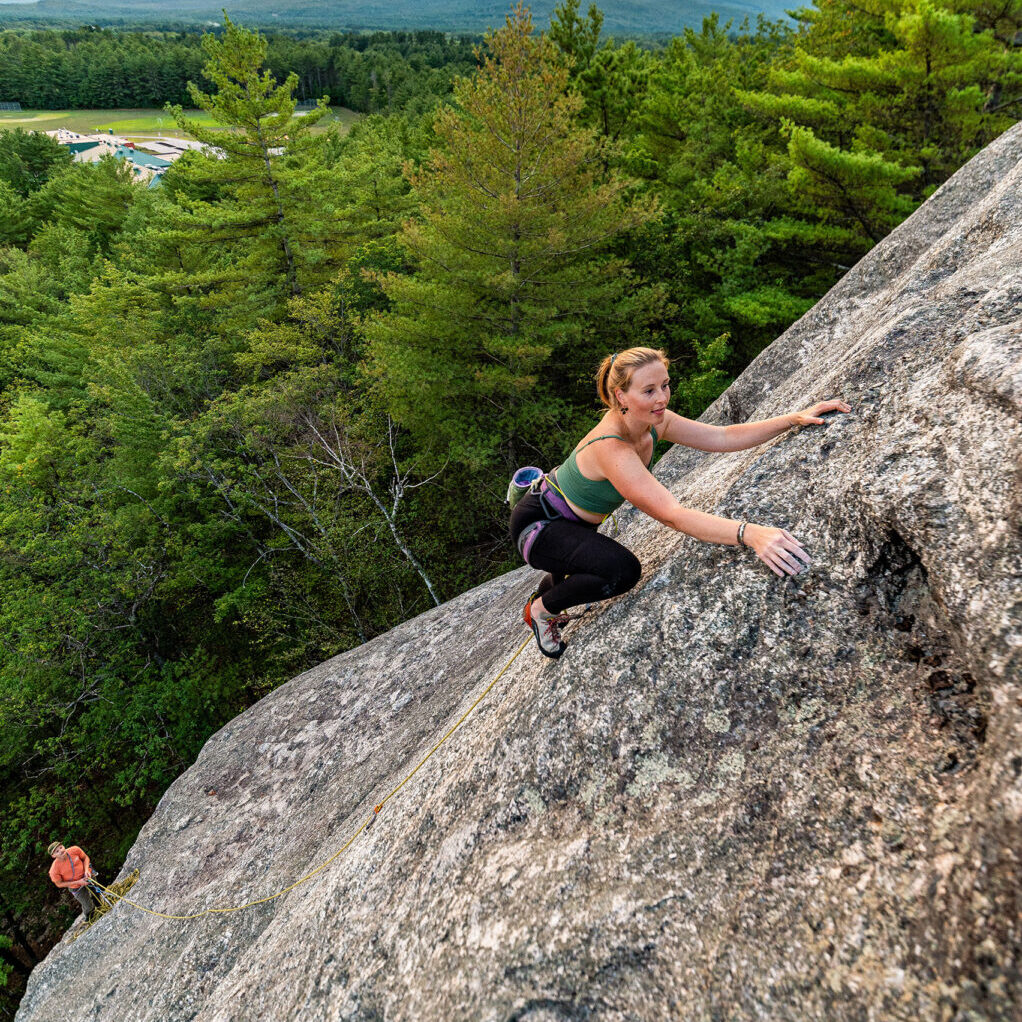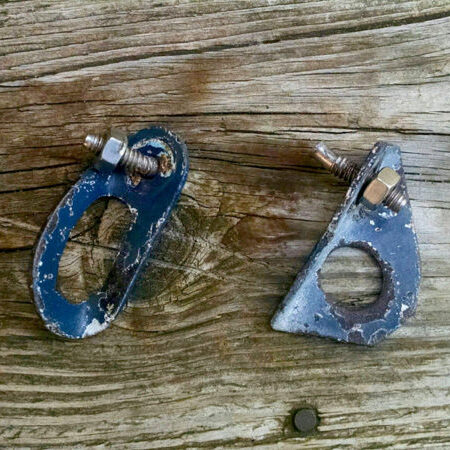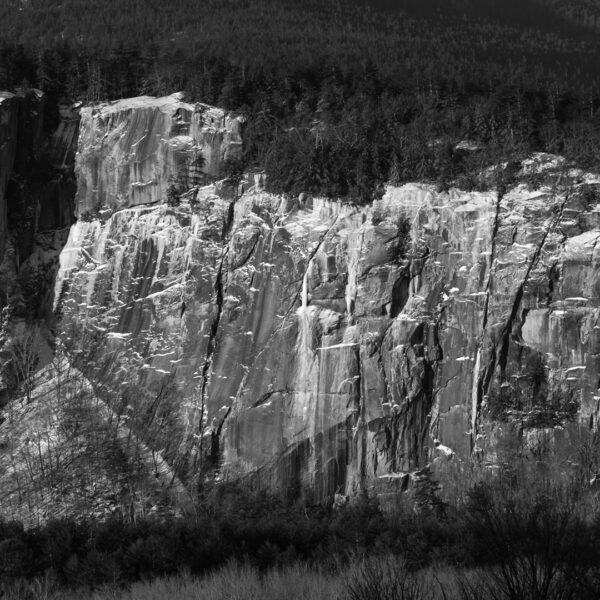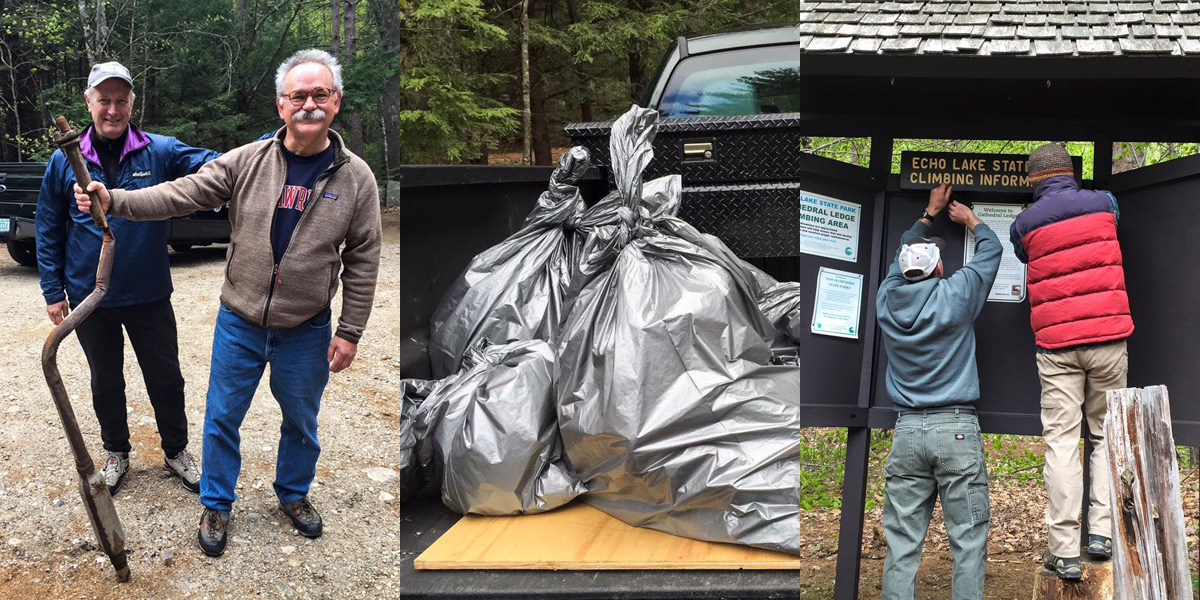
Projects & Campaigns
Jockey Cap Stewardship
Upper Saco Valley Land Trust (USVLT) needs our financial support to address severe trail erosion and install trail and educational signage at Jockey Cap. To date, USVLT has raised over $100,000 through grants. We now need your support to complete this stewardship effort.
Bolt Replacement Initiative
One of the main goals of Friends of the Ledges is to replace aging bolts in the eastern White Mountains. We strive for 1:1 bolt replacement, reusing the same holes whenever possible. Help us replace bad and aging bolts in the eastern White Mountains. Check out the full page for a listing of what has been replaced, what needs to get replaced, and to make an observation.
Tread Lightly
Tread Lightly: Winter Climbing in the White Mountains. The climbing community is realizing that some of the exploratory winter climbing activities of the past are unsustainable. No one wants to be told what to do, especially climbers. But we need to come together to protect the terrain that sustains us.
Photo: Spring 2016 clean up at Cathedral Ledge.
